After breakfast, the boat crew told us that we needed to be off the ship by 8:30 a.m.! Not much time for a relaxing morning today. Ruby and I packed up and headed out.
Since I am traveling for 3 weeks, I have a big suitcase, and as soon as we checked out, an older man came up and offered to carry my suitcase for me. He didn’t seem like someone with the ship, and I felt like he was going to charge me extra, so I refused. Actually, I didn’t really know what was going on, and in those situations, I’d rather not let go of my stuff. So I held on to my suitcase.
All the way outside, older men kept coming up and telling me that we had a lot of steps to climb and they could carry my suitcase for 20 kuai (about $3). I was feeling stubborn and confused about what was actually going on, so I continued to refuse.
When people continued to try to take my suitcase, I started to get frustrated. I still wasn’t sure what was going on. I didn’t know if I wanted to carry my suitcase up a bunch of stairs, but I also didn’t know what I was paying for. I was confused why the crew members weren’t helping with anything. And I was frustrated that there was yet another fee to pay (even if it was small) just to leave the ship. So in my stubbornness, I carried my suitcase all the way up all of those stairs. When I stopped to catch my breath near the top, another passenger offered to carry the suitcase up the last few steps, and I let him. He didn’t ask for any money, haha.
I thought a lot about this situation and what I should have done. The money was very little, and the men definitely worked hard to earn it—I should know, it wasn’t easy. So why was I so frustrated about the entire situation? Being confused didn’t help. I didn’t know what I was paying for or even if I should pay when the first man tried to take my suitcase. By the time three or four men had tried to take it, I was a bit clearer, but I didn’t have a second to think about whether or not I wanted anyone to help. Maybe I should have just let the men carry my suitcase for 20 kuai, but the cruise was expensive, and there had been lots of extra fees. I was tired of extra fees and tired of paying money that I wasn’t prepared to pay.
I’m not sure what I should have done, but I wish I’d had a bit more warning before I had to make the decision.
The rest of the day was much better. Ruby and I went to lots of places that she wanted to visit. First, we went to the metro exit where the train went through the building. We came out on the wrong side of the building though and couldn’t really see it. So Ruby found a viewing spot, and we walked over. The walk was only about 15 or 20 minutes, but it felt like quite a hike by the time we went up and down stairs and hills, took the wrong road a few times and finally found the spot. We were a bit farther away than I expected, but we saw that train go through the building!
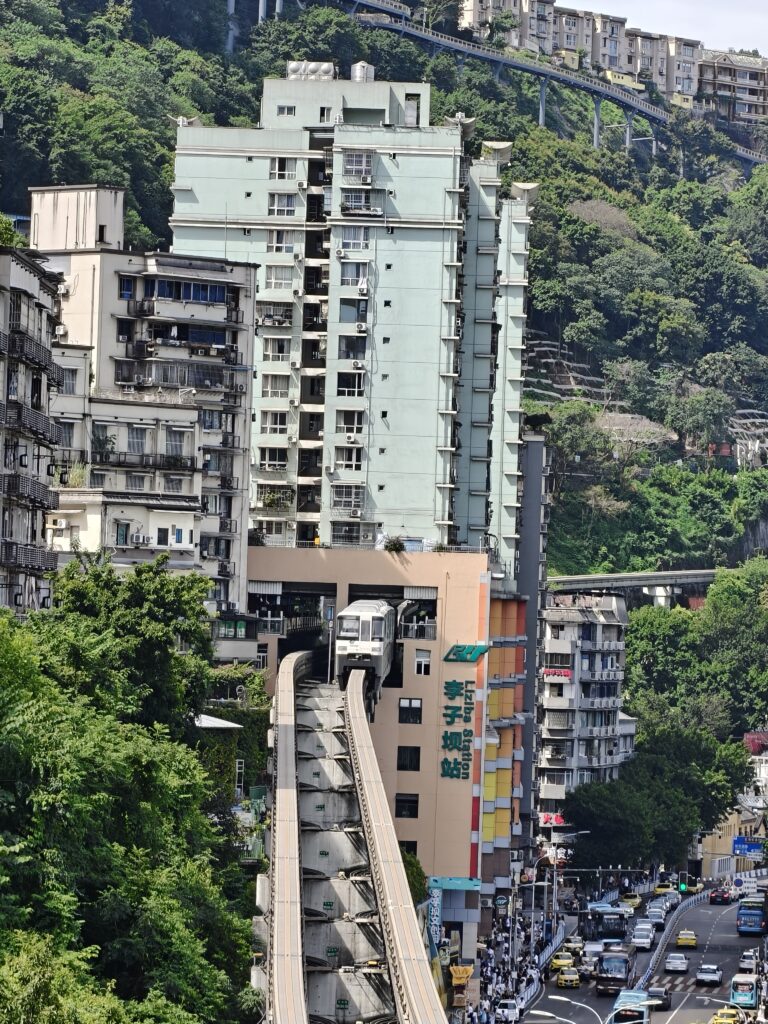
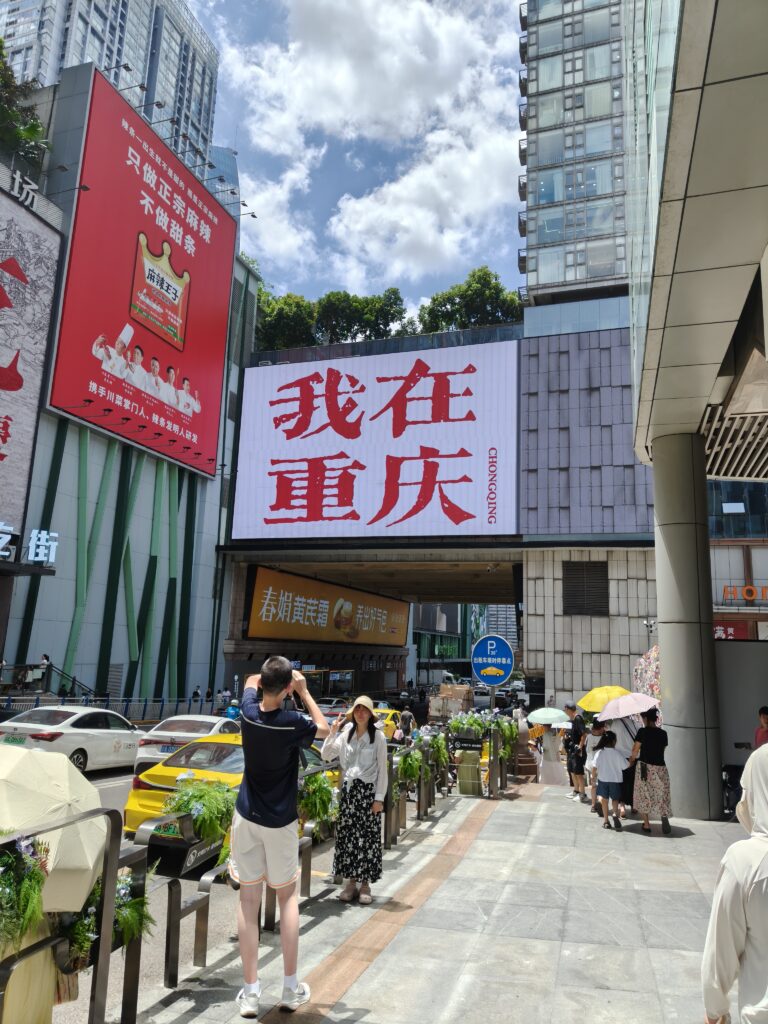
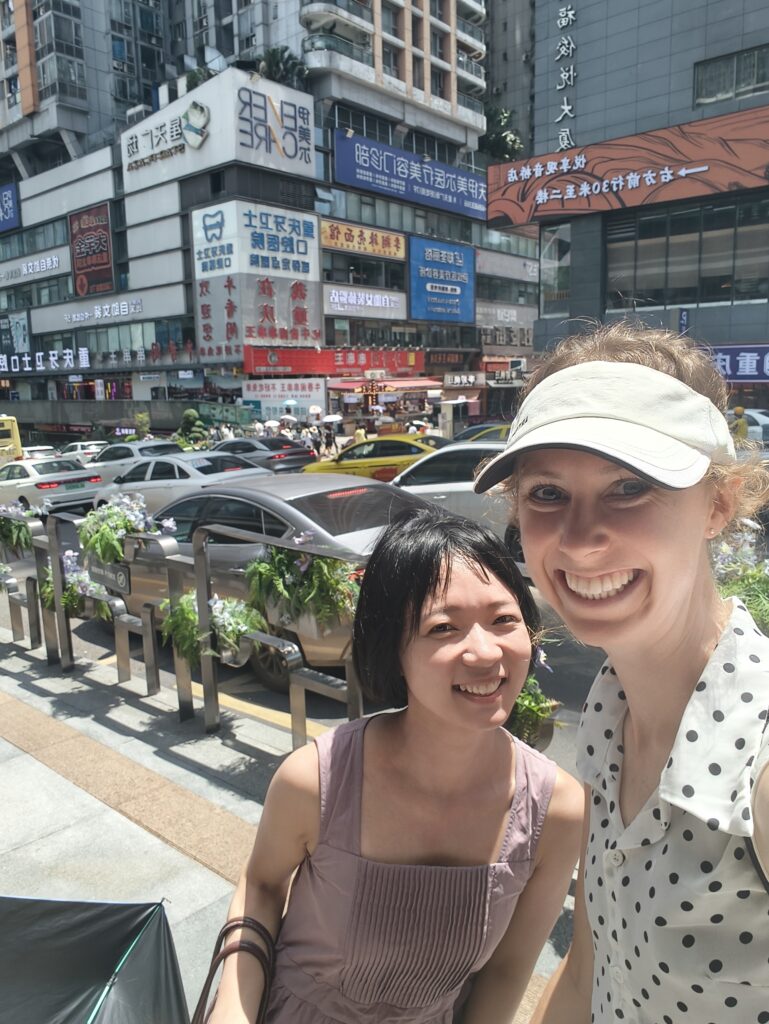
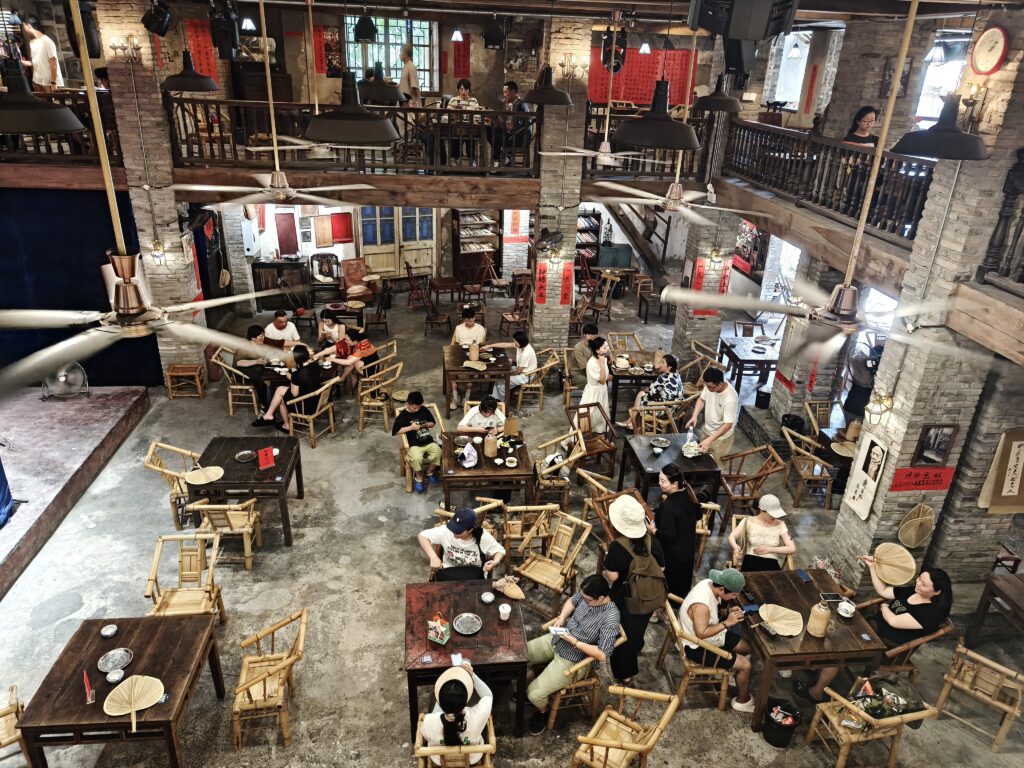
We also went to an old town walking area. These areas were all over Chongqing, and we went to a couple of them. This first one was called 山城步道(Shan Cheng Bu Dao). Old style buildings were built into the mountain, and again there were lots of stairs. Before I left for the trip, someone had told me to wear comfortable shoes in Chongqing because just walking around the city is like climbing a mountain. They were right, and I’m glad I took their advice!
I was hot and a bit tired, and I kind of wanted to find an interesting shop to enjoy the air conditioning. We passed a pottery shop, and that fit the bill with interesting and air conditioning, so we went inside.
This pottery shop was probably the highlight of my day. We looked around and then the worker started chatting with us. We found out that he owned the shop with his sister and they made most of the pottery themselves in the back. His sister was working on some pieces right there in a corner of the shop.
“Come sit down!” The brother guided us to a little tea table. “I’ll make you some tea. For free!”
“Ok!” Ruby and I agreed. I love free things.
The brother started boiling water for the tea and placed three different cups in front of us. “I’m going to make a pot of tea so that you can taste the tea from each of these three cups.” He told us, motioning to the china cup and two pottery cups. I didn’t quite catch the technical difference between the two types of pottery, but one was much thicker and rougher, the other was thinner and more refined.
As the water boiled, he told us about the different types of cups and how they made them in the back with a furnace. He also told us that they used a potter’s wheel for some of the things in the shop, but they made many of them just by hand, forming the pottery into the desired shape with their fingers.
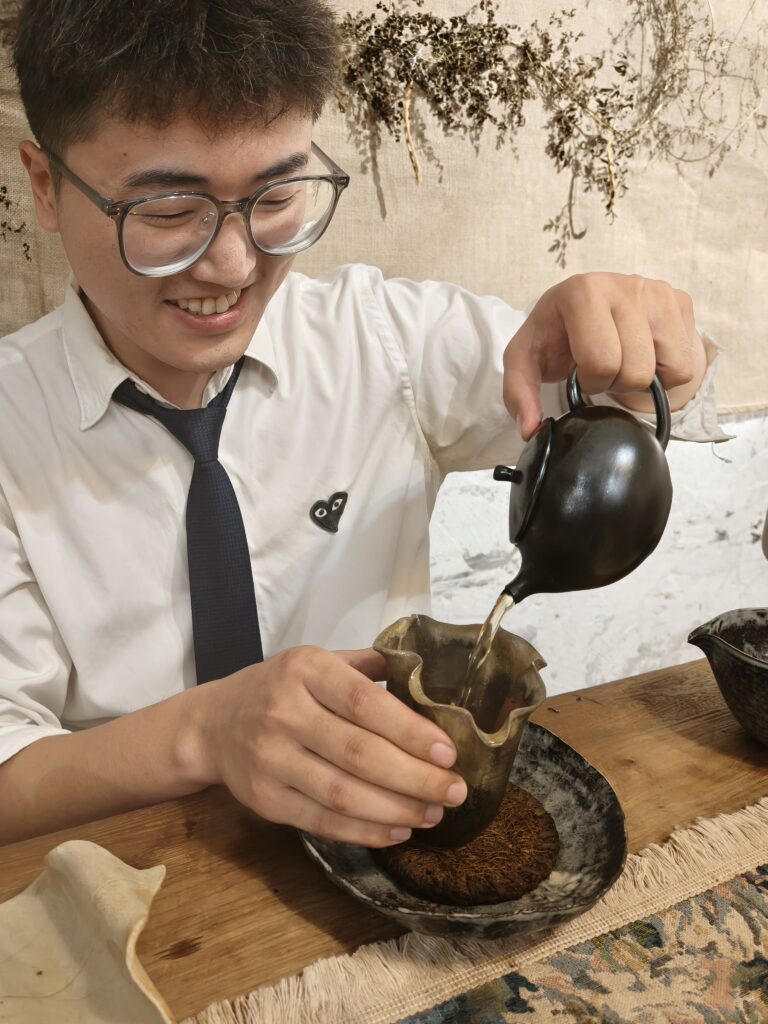
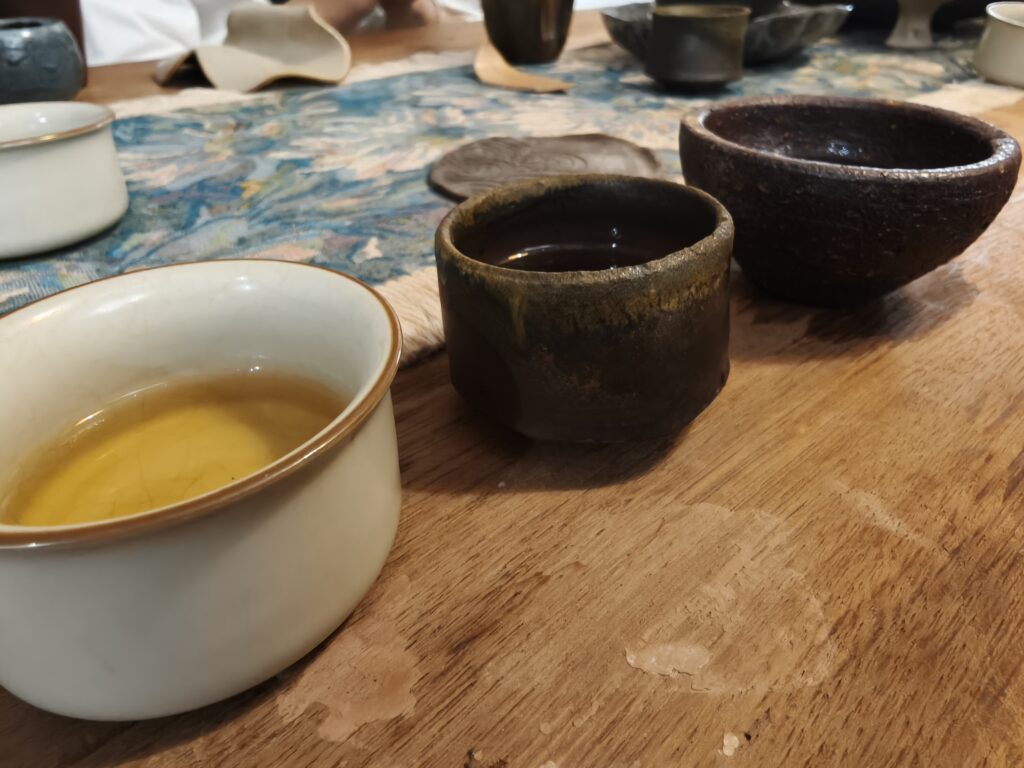
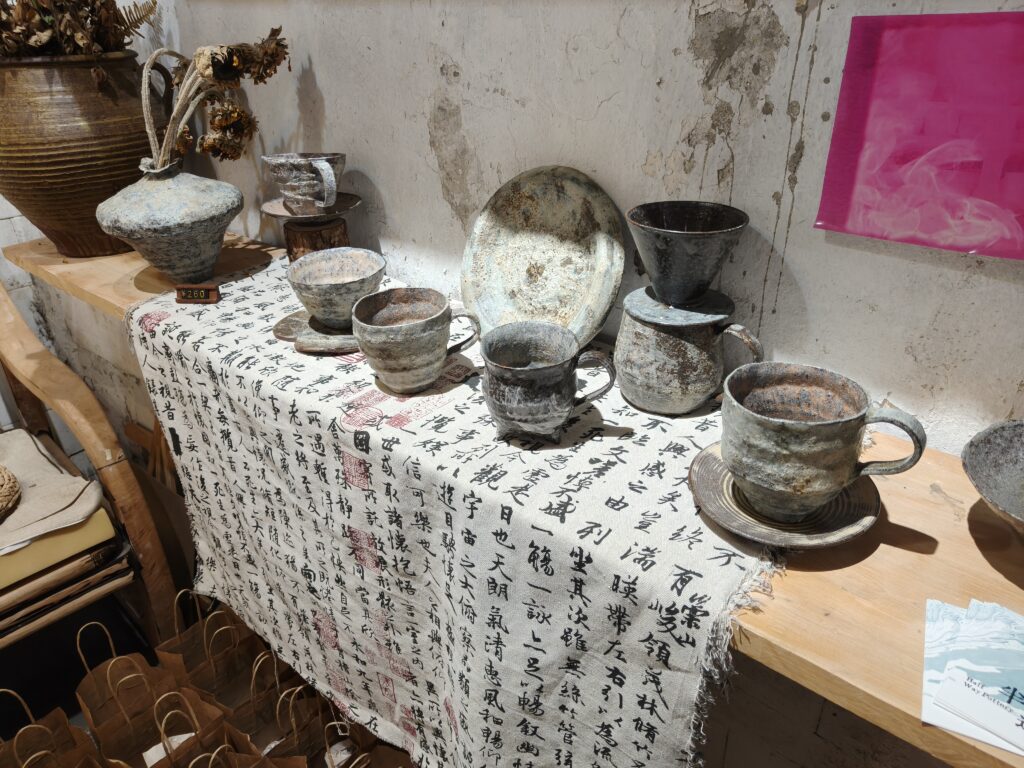
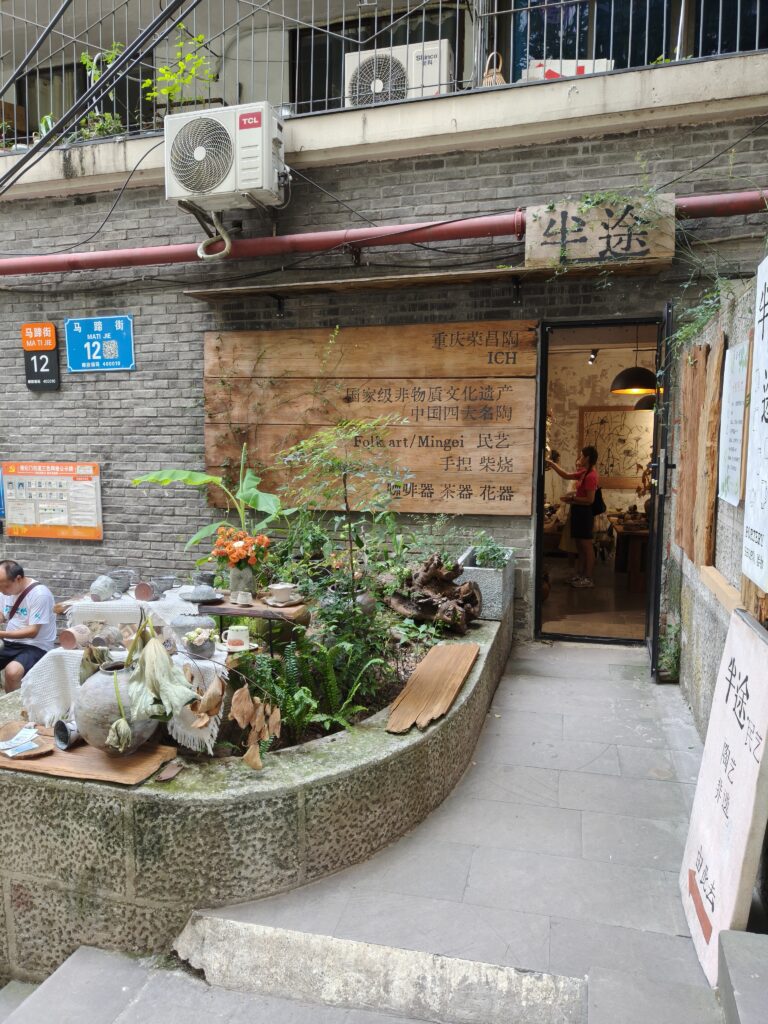
After the water was ready, he made the first pot of tea and used it to wash the tea leaves and our cups. Finally, he was ready to let us try to tea.
“First, you need to drink the one from the normal china cup.”
We complied. “It tastes normal. A bit bitter.” I said.
“Ok, next you need to drink the one from the thick, pottery cup.”
This one was completely different. The pottery absorbed much of the bitterness, leaving a light and refreshing taste in this tea. I loved it!
“Now drink the last one—the thinner one made from pottery.”
This last one was a mix between the bitterness of the first one and the lightness of the last. It had more flavor than the second one, but it didn’t have the bitterness of the first. I definitely liked both of the pottery cups more than the normal tea cup. I was amazed that a cup could change the flavor of the tea.
“Usually younger people tend to prefer the least bitter one and older people tend to prefer the more bitter ones,” the guy said.
I wanted to buy something, but a small cup wasn’t very practical for one person, and I definitely don’t need any more mugs, so I bought a beautiful little plate for serving fruit or something small. I love having things in my house that remind me of my travels, and I’m so glad I can support artists who are trying to scrape out a living. As I’ve tried to sell my book, I’ve gotten a small taste of how hard that is!
The brother and sister were from Sichuan, a nearby province, but they moved to Chongqing because it was cheaper and easier to have their business there. The brother was gone much of the time teaching about managing museums in a university in southern China, but his sister kept the shop going and he helped when he could. I was surprised when he said that the shop and a living area above the shop only cost around 1,500 kuai per month (around $200). I imagine the same place in Guangzhou would be much more expensive.
I met up with Jack and Clara later in the afternoon, and we wandered around the city a bit. We were under the impression that Chongqing was the kind of city where you walk into a building on the first floor, but if you walk to the other side of the building, you find that you’re on floor 17 or 22.
We found one of those buildings, walked up a few stairs and felt like we were on the first floor. But after walking through the building, passing lots of people selling fans and magnets and other cheap touristy souvenirs, we ended up on floor 17. We had a nice view of the river and some other buildings, but it wasn’t quite as impressive as we had imagined.
We’d also heard about another building like this called 魁星楼 (kui xing lou). We grabbed a taxi and headed over. On the way, we passed a beautiful building and then we realized it was a hospital. I kind of wanted to go, but I was also hoping to avoid the hospital on this trip!
A moment later, the taxi driver stopped and told us we had arrived. We got out, but all we could see was the cool hospital. Then we saw lots of tourists climbing up some stairs off to the side, and we realized that’s where we were supposed to go. So we headed over and climbed up to second floor.
On the second floor, we found a hot, open square on top of the building.
“The pagoda-style roofs are really cool, but what are we supposed to be looking at?” I asked.
We walked to the other side of the building, and when we looked over, I got such a shock that I had a bit of vertigo. I could look straight down the side of the building which was 22 floors up. That was a weird feeling.
These two spots were cool, but we were a bit surprised that these two places were the only ones in the city that were really like that. There were still lots of stairs, but not as many places like this. The rest of the city felt like an average Chinese city—beautiful but normal. There were other places like this, but fewer than I expected.
It wasn’t quite time for dinner, so we kept wandering around a bit more and passed a really cool looking art museum with red pillars sticking out the side of the building. The red pillars looked sort of like sideways incense sticks. We decided to go inside and found a lot of paintings for sale. I was surprised that the paintings were on sale for 3-10,000 yuan. Art is expensive.
Many of the pieces were very nice, and I found another artist that I really like. On another floor, we found lots of calligraphy on display. I don’t usually pay much attention to calligraphy, but Jack and Clara enjoyed looking at it and commenting on the different styles. Clara taught me the difference between cursive and other styles of calligraphy. I had seen the difference, but I didn’t realize that the different styles came from different time periods. I really enjoyed learning about those differences!
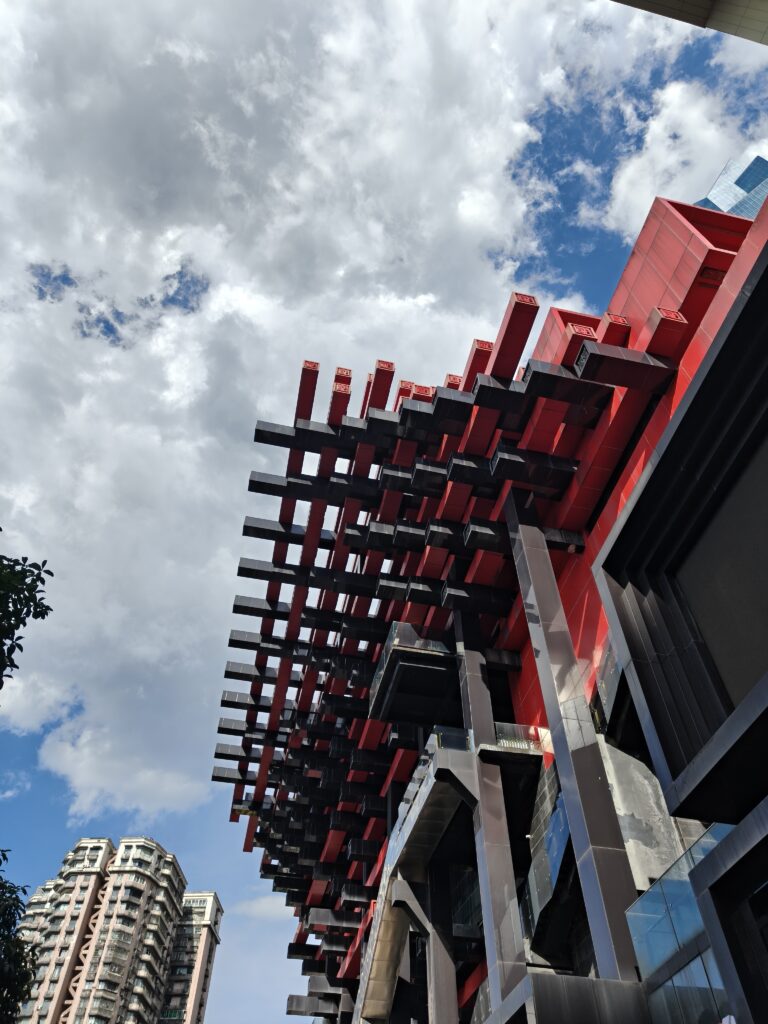
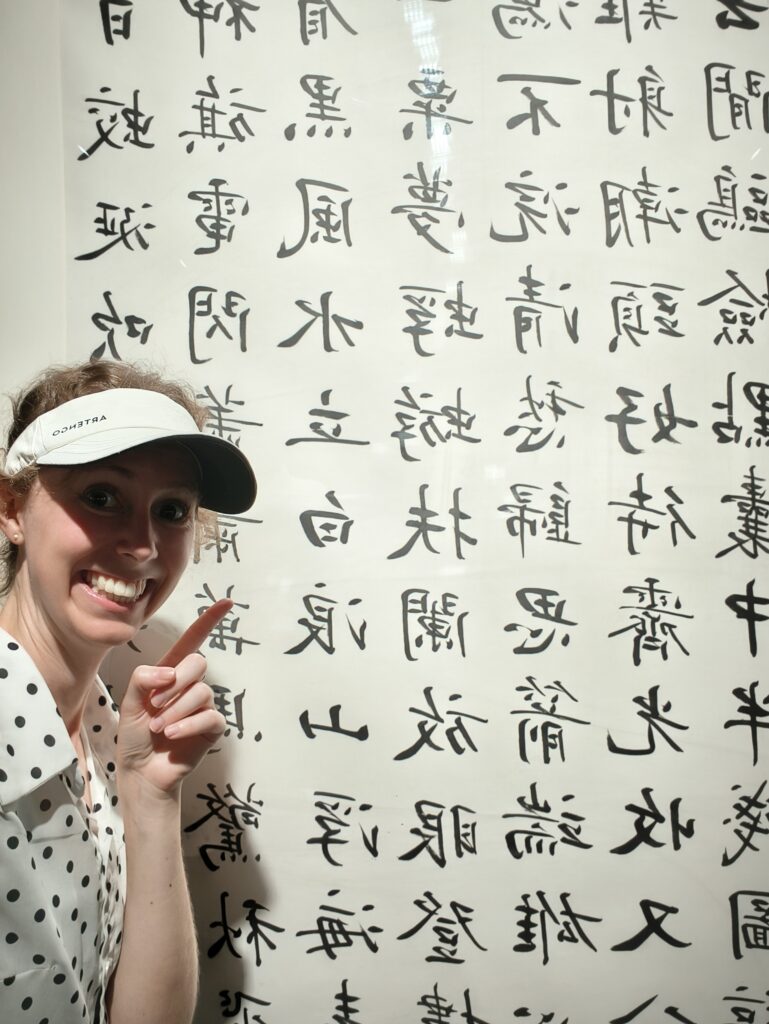
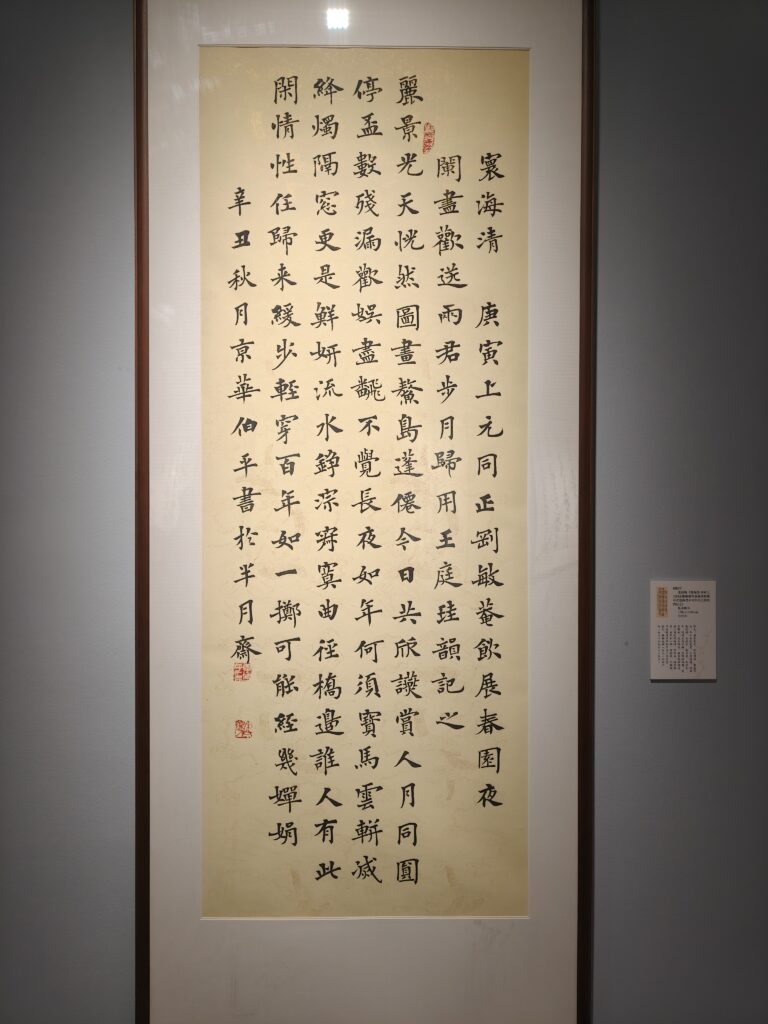
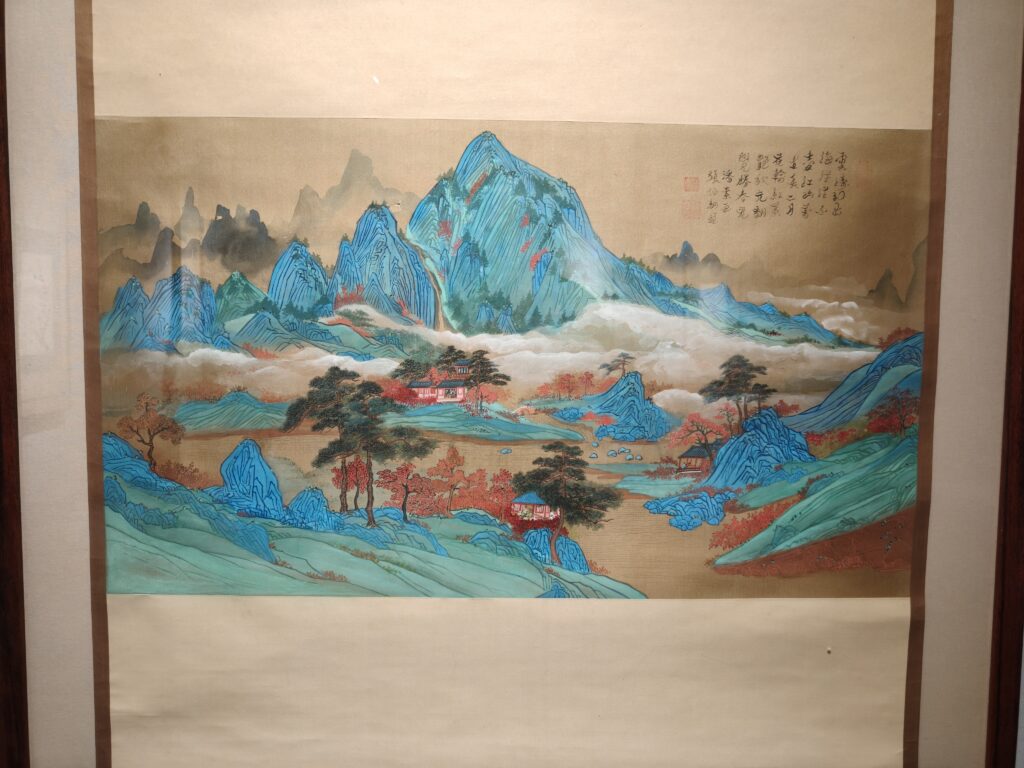
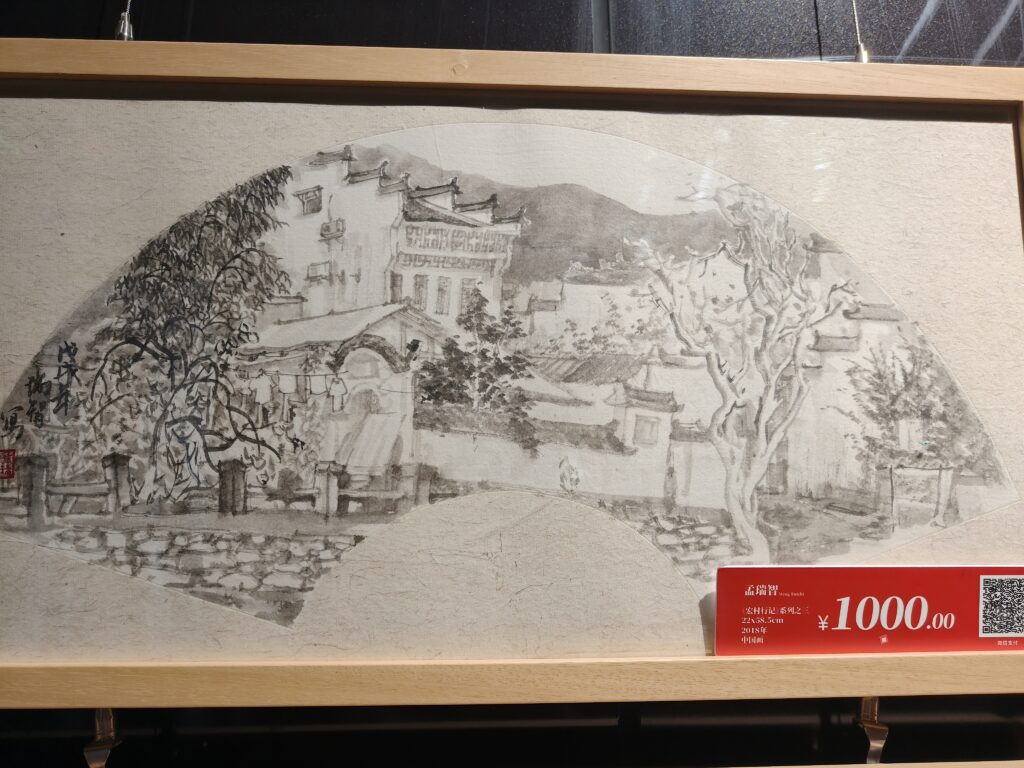
We headed to 洪崖洞 (hongya dong) for dinner and had some great food that the restaurant worker grudgingly agreed to make not spicy for us. It was delicious!
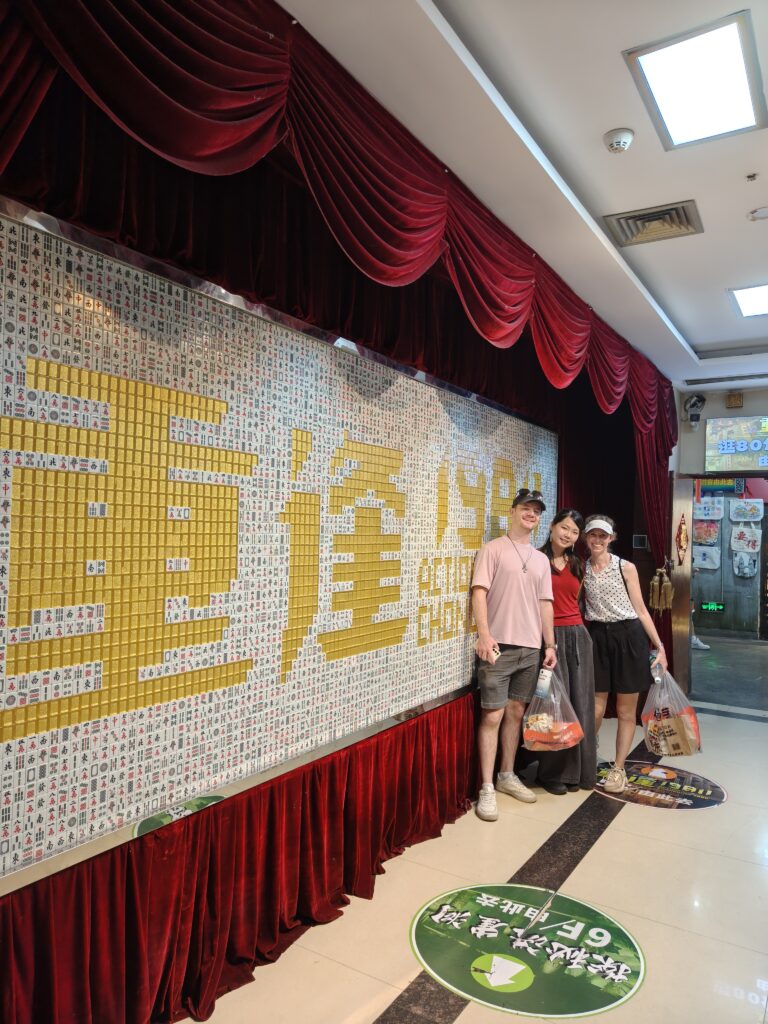
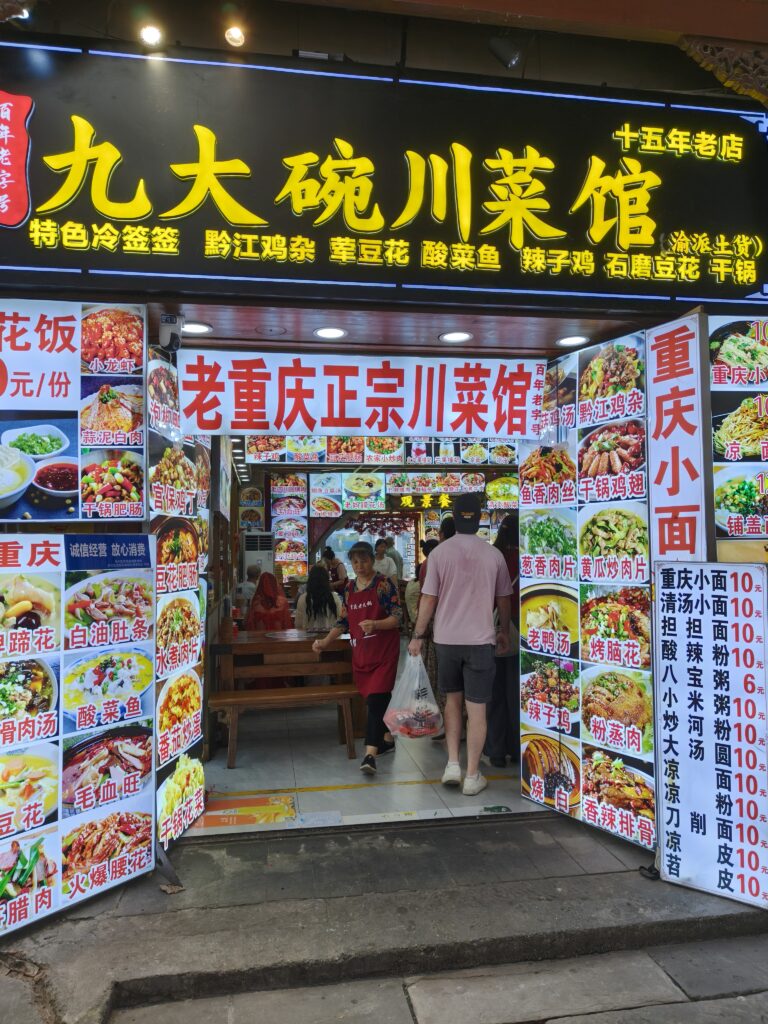
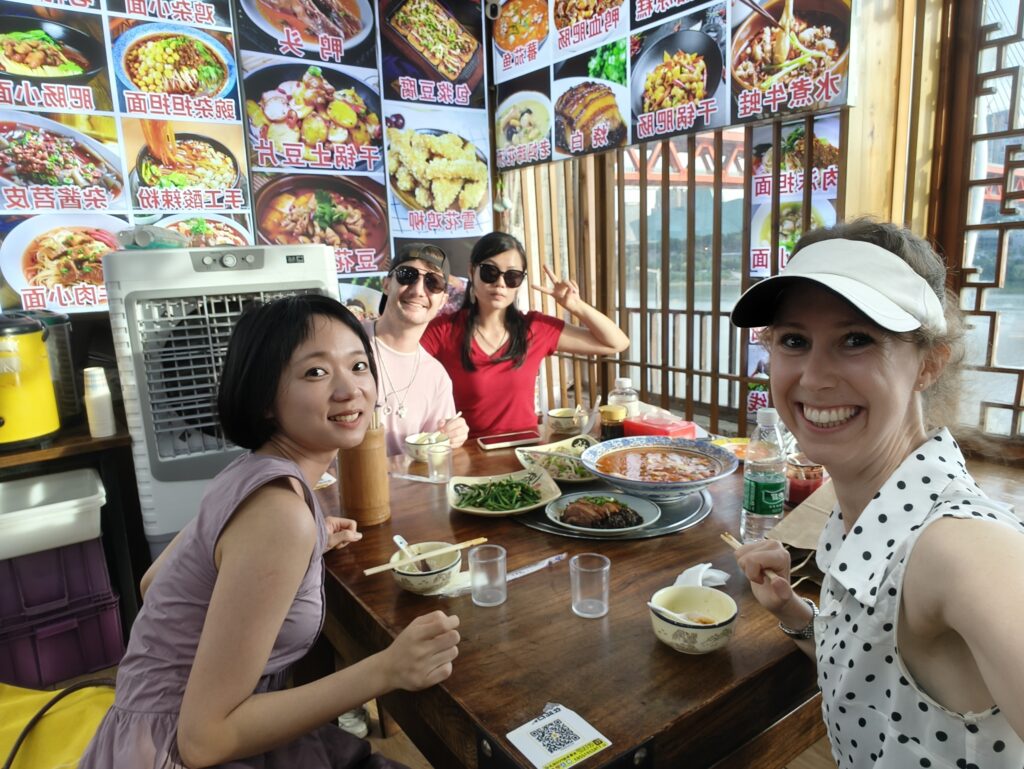
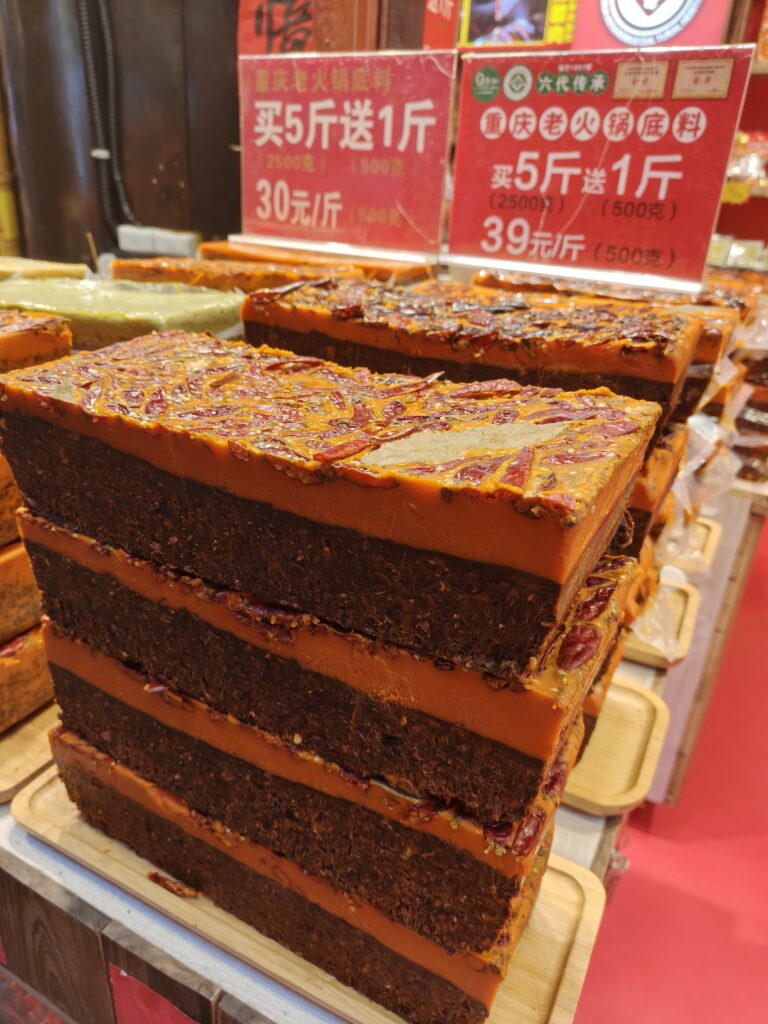
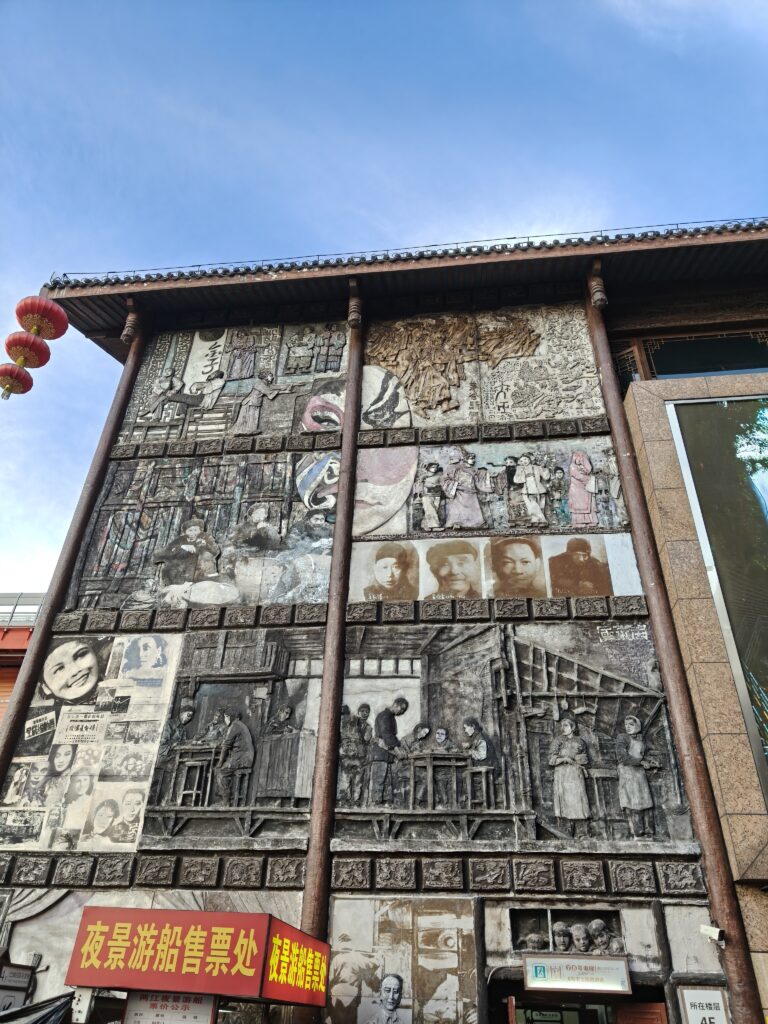
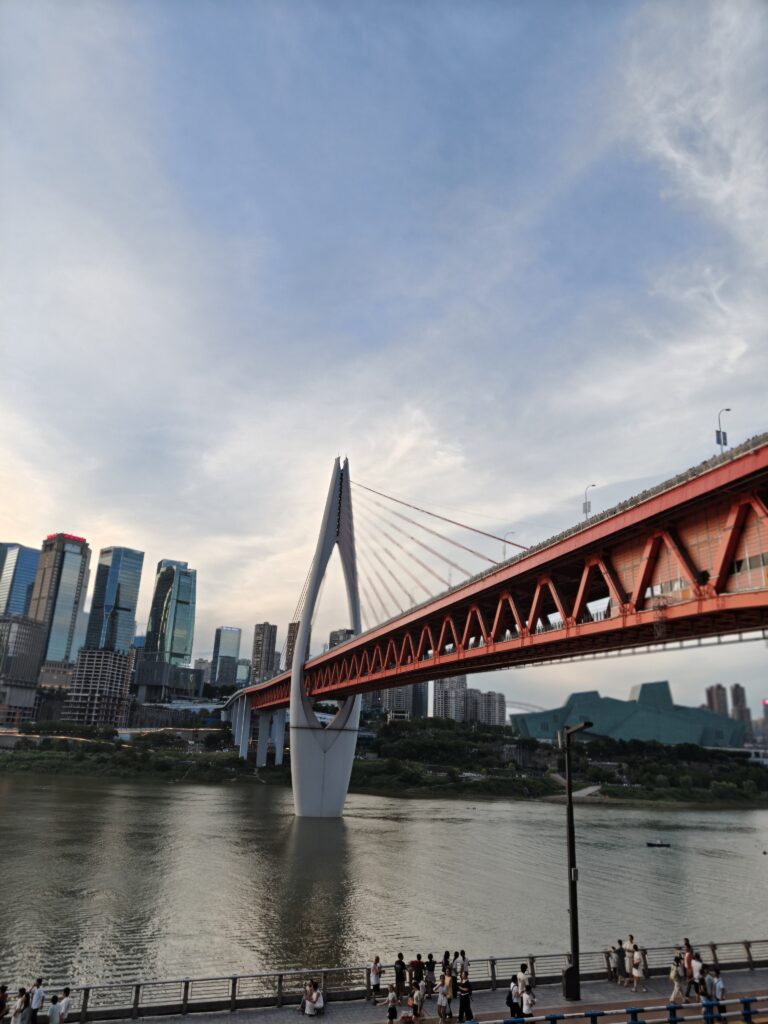
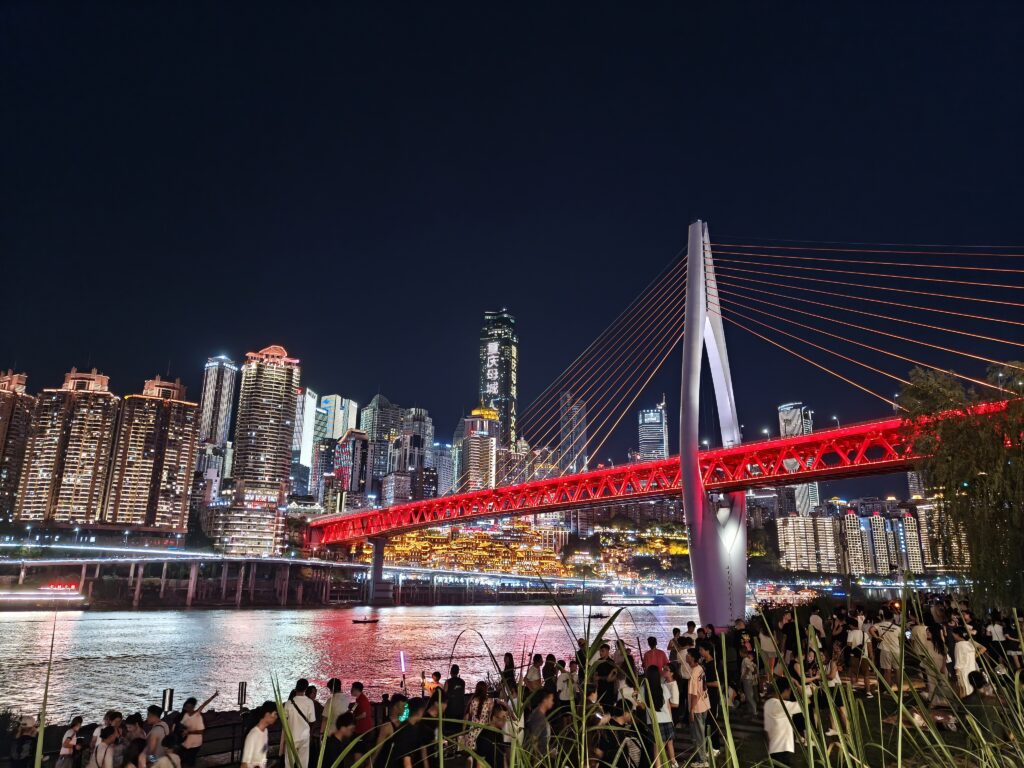

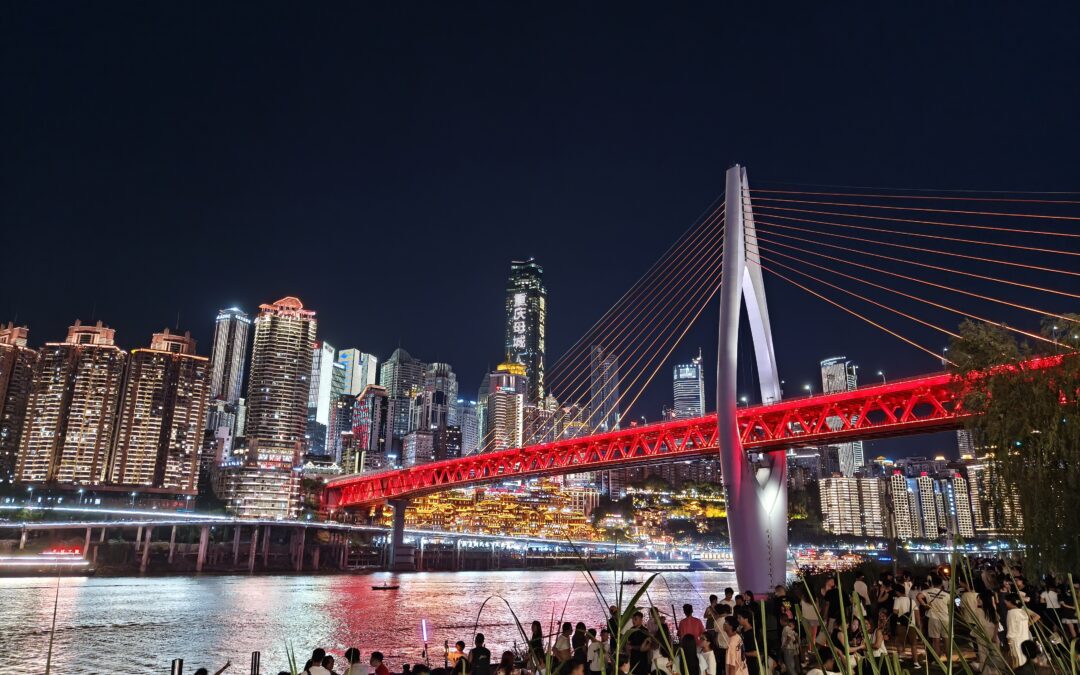
Thanks for sharing your travels! Love them! Mom
Thanks, Mom!